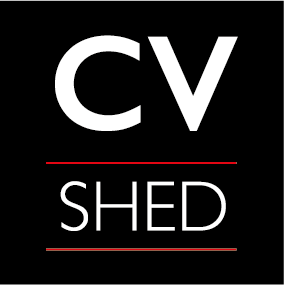Can ChatGPT write a blog about supporting statements?
I’ve finally done it – I’ve delved into the witchcraft of ChatGPT! If you haven’t heard the buzz about it in the media over the last few weeks you must have been living under a rock, but basically it’s a new AI tool that will essentially do... more or less what you ask of it. So far, it’s been used for skiving off homework, writing malicious code and plenty of other, less nefarious, reasons. I thought I’d see how it stacked up when I asked it to write my latest blog post for me.
A blog about supporting statements has been on my to-do list for a while, so I typed into ChatGPT “Write an SEO optimised blog post of 1,000 words titled "How to write a supporting statement" in the style of CV Shed”. Let’s see how it fared…
The blog post - and my analysis
As a job seeker, you know that a CV is an essential part of your application. It highlights your skills, experience, and qualifications, and gives employers a clear idea of what you have to offer. However, sometimes you need to go beyond your CV and provide further context and detail to support your application. This is where a supporting statement comes in.
So far, so good! It makes sense, the spelling and grammar is bang on (although I’m not a fan of the Oxford comma) and introduces the topic nicely. I like that it also mentions CVs, which are obviously my core offering. A strong start!
A supporting statement is a document that you attach to your CV or job application to give further information about your suitability for the role. It allows you to elaborate on your skills and experience and explain how they align with the requirements of the job. It’s an opportunity to showcase your unique strengths and demonstrate your passion for the role.
It's doing a pretty good job here of writing “in the style of CV Shed”, although I don’t agree with the assertion that a supporting statement would be attached to your CV. They tend to be part of an application form – a cover letter is more appropriate for accompanying your CV.
Writing a supporting statement can be intimidating, especially if you’re not sure where to start. Here at CV Shed, we’ve put together a guide to help you write a winning supporting statement that will get you noticed by employers.
This paragraph doesn’t say anything of value, but brownie points for name-dropping CV Shed.
Understand the purpose of a supporting statement
Before you start writing, it’s important to understand the purpose of a supporting statement. It’s not just an opportunity to list your skills and experience – it’s a chance to explain how you can make a difference in the role. Think about what the employer is looking for in a candidate and how you can demonstrate that you’re the best person for the job. Focus on specific skills and achievements that are relevant to the role and explain how you’ve used them in the past.
There's some some actionable advice, but would be improved by explaining the STAR method of conveying your skills and achievements (maybe I’ll write a blog about that in the future…).
Follow the job description and requirements
Before you start writing your supporting statement, read the job description and requirements carefully. Make a list of the key skills and qualifications that the employer is looking for, and think about how your experience and background align with these requirements. Your supporting statement should be tailored to the specific role you’re applying for, so it’s important to address the requirements of the job directly.
This is surprisingly solid, actionable advice and sounds like other recommendations I’ve given elsewhere on my blog – I always suggest tailoring the application to the role based on the job advert.
Start with an introduction
Your supporting statement should begin with an introduction that explains your motivations for applying for the role and how your skills and experience make you a strong candidate. This is your chance to grab the employer’s attention and show them why you’re the perfect fit for the job.
While grabbing an employer’s attention is all well and good, I feel that the advice to “start with an introduction” is a bit primary-school-basic to be of any use to a professional.
Focus on your strengths
In your supporting statement, you should highlight your strengths and achievements that are relevant to the role. This could include your technical skills, problem-solving abilities, or leadership experience. Be specific and give examples to illustrate your points. For example, if you’re applying for a role as a project manager, you might mention a time when you successfully managed a complex project, or if you’re applying for a customer service role, you could talk about your excellent communication skills and how you’ve used them to resolve customer issues.
Yep, again some decent advice – I’d maybe focus more on quantifiable achievements and outcomes, but the recommendation to be specific and give examples is bang on.
Explain how your experience aligns with the role
In your supporting statement, you should explain how your experience aligns with the requirements of the job. This could include previous roles that have prepared you for the role, or specific skills and qualifications that make you a strong candidate. Use concrete examples to illustrate your points and show how your experience is relevant to the role. For example, if you’re applying for a marketing role, you might talk about a time when you developed and implemented a successful marketing campaign.
It’s definitely following the brief to write “in the style of CV Shed” here – I use the word “align” a LOT! I can’t help but feel that this paragraph is repeating what’s already been said though – there’s nothing new here and the entire paragraph could be cut without diluting the overall message.
Conclude with a strong closing statement
End your supporting statement with a strong closing statement that summarizes your key points and reiterates your interest in the role. This is your chance to make a final impression on the employer and leave them with a clear understanding of why you’re the best candidate for
Again, telling the reader to conclude with a conclusion probably doesn’t need saying. And unlike ChatGPT, a human isn't likely to finish their writing mid-sentence without a decent round-up. It’s clearly taken my request for a 1,000-word blog post very seriously, but I’d rather it had finished the job!
The verdict
I was surprised by the quality of the language and how well it was able to meet the brief, but the actual advice given was rather basic and generic, with some of it feeling like padding and repetition. It would have been better if it had included some examples to illustrate the points it was making, too. On the whole, the article was pretty Blah.
Did it meet the requirement for SEO optimisation? Well, the post has been up for a few weeks now and it's ranking... absolutely nowhere. As many of my other blogs rank on the first and second pages of Google, I think I'll stick to writing my own posts for now. It could at least have added some links to a few of my other posts.
In the meantime, if you need some help with your job search documents, I can guarantee that CV Shed writes everything from scratch, whether CV, LinkedIn profile or cover letter. No bland, computer-generated nonsense here, just human input and personality. Take a look around my website to see how I can help you!




